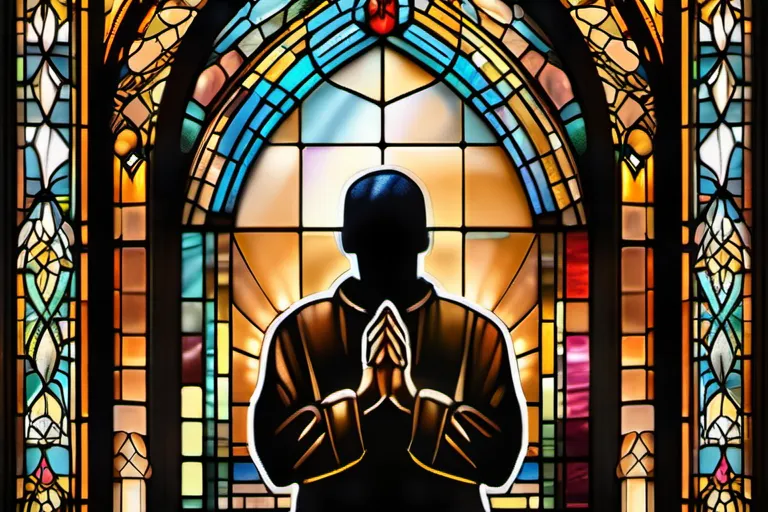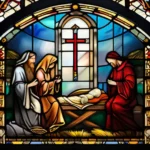Explore the profound impact of faith on religious thought, its significance, and its role in shaping beliefs.
Faith is a fundamental aspect of religious thought, playing a crucial role in shaping beliefs, practices, and communities. In this article, we delve into the intricacies of faith’s role in religious thought, providing a comprehensive guide to understanding its significance.
The Nature of Faith: An Overview
Imagine faith as the cornerstone of religious thought, much like a foundation holds up a towering skyscraper. How does this invisible yet powerful force shape our beliefs and practices? What is the essence of faith?
Defining Faith involves more than just agreeing with certain statements; it’s about believing in something without seeing tangible proof. It’s like trusting a friend who has never broken your trust before, even if you can’t explain why their word feels so reliable.
In many religious traditions, faith is not merely a passive state but an active force that drives individuals to live according to the teachings of their religion. For instance, in Christianity, faith in Jesus Christ as the son of God and savior is central to the Christian belief system. Similarly, Muslims emphasize the importance of submitting oneself to Allah through iman, which encompasses belief and trust.
Across various religions, faith manifests differently—through acts of worship, adherence to dietary laws, or even charitable deeds. Each expression serves as a testimony to the believer’s commitment, much like different branches supporting the same tree.
From a broader perspective, understanding the role of faith in religious thought involves recognizing its transformative power. It can inspire individuals to lead morally upright lives, seek justice, and find comfort during times of hardship. Faith often acts as a bridge between the spiritual and the physical world, providing meaning and purpose to life.
As we delve deeper into this chapter on The Nature of Faith: An Overview, remember that faith is not just a personal journey but one that connects individuals across communities, cultures, and history. Its influence spans everything from daily rituals to grand philosophical questions about the nature of existence itself.
Faith and Belief Systems
How does faith shape belief systems? It’s like planting a seed in rich, fertile soil; without the nourishment of faith, many religious beliefs might not even sprout. Let’s explore this intricate process and its profound impact.
Imagine a garden where different religions grow. Each religion has its unique set of beliefs, practices, and values, all rooted in faith. This faith acts as the guiding light, illuminating the path through complex spiritual terrains. How do these belief systems develop? They often start with foundational texts—scriptures that serve as the bedrock upon which other teachings and traditions are built.
Consider The Bible for Christians or The Quran for Muslims. These scriptures are not just books; they are living, breathing entities that continue to shape beliefs and practices centuries after their writing. They provide answers to questions about the nature of the universe, morality, and spirituality. Faith in these texts guides followers in understanding and interpreting them, much like following a map during a journey.
But faith also evolves over time, adapting to new contexts and challenges. Just as a tree grows taller with age, belief systems grow and change through tradition and interpretation. For instance, the interpretation of The Torah has evolved significantly among different Jewish communities, reflecting diverse cultural and historical influences.
The role of faith in shaping these belief systems is pivotal. It acts like a lighthouse, illuminating the direction and purpose for individuals and communities. Without it, the journey through life’s uncertainties can be daunting. Faith gives meaning to rituals, provides comfort during hardships, and inspires moral action. In essence, it binds the soul to the divine, making the abstract tangible.
How do you see your own faith influencing your beliefs? Are there moments when you feel particularly guided by its teachings?
The Psychology of Faith
The psychology of faith delves into the complex interplay between our minds and our spiritual beliefs. Have you ever pondered why certain ideas stick so firmly in your mind, while others fade away like mist on a sunny morning? Faith is not just about accepting truths; it’s also deeply intertwined with how we think, feel, and interact with each other.
From a cognitive perspective, faith often acts as a mental framework that organizes our thoughts. It’s like building a house where every room has its purpose. For instance, in many belief systems, faith provides a rationale for understanding the world around us. It helps us make sense of life’s uncertainties and challenges by offering explanations and guiding principles.
Emotionally, faith can be as powerful as a lighthouse in a stormy sea. It lights our way through dark moments, giving us comfort and hope. Think about it: when you’re feeling lost or scared, what do you turn to for solace? For many, it’s their faith—a deep well of emotions that provide strength during trials.
Socially, faith plays a crucial role in binding communities together. Just as roots hold plants firmly in the soil, faith can anchor people to each other and to their traditions. In religious gatherings, whether it’s a church service or a mosque ritual, there’s an underlying bond that transcends individual differences. It’s like a shared language that brings people closer, fostering a sense of belonging.
Understanding the psychological dimensions of faith helps us appreciate its multifaceted nature. It reveals how deeply intertwined our mental and emotional lives are with our spiritual beliefs. Whether it’s through cognitive structures, emotional support, or social connections, faith shapes not just what we believe but also who we are as individuals and members of a community.
Faith and Religious Practices
How does faith weave through the fabric of religious practices, making them vibrant and meaningful? In exploring this question, we embark on a journey where every ritual, ceremony, and daily devotion becomes a thread in the intricate tapestry of belief.
Consider the daily prayers that many religious people engage with. These aren’t just rote actions; they are moments of profound connection, much like the quiet moments when we whisper our deepest thoughts to a loved one. Prayer is not merely about asking for favors but also about nurturing a relationship with the divine, akin to tending to a garden where each seed sown nurtures the soil.
The rituals of religious practices are like the rhythm of a heartbeat—consistent and vital. They provide a structure that gives meaning to life’s moments, much as the rules in a game guide its play. Whether it’s the lighting of candles during Shabbat or the chanting of hymns on Easter Sunday, these rituals create a sense of continuity and tradition, reminding us of our place within history and community.
Ceremonies, such as weddings and funerals, are like milestones in life’s journey. They offer a framework for expressing emotions and communal values, just as a map guides travelers through unfamiliar territories. In these moments, faith isn’t just abstract; it becomes tangible, visible, and deeply felt—like the warmth of a campfire on a cold night.
Through these practices, faith transforms into an active part of our lives, not just a passive acceptance of doctrine. It’s like the difference between hearing about a beautiful landscape and actually experiencing its breathtaking vistas. Faith isn’t just about belief; it’s about the lived experience that makes those beliefs meaningful and transformative.
As we delve deeper into these practices, we see how faith becomes the glue that binds communities together, much as shared rituals and devotions create bonds between people. These practices shape not only our individual spiritual lives but also the social fabric of religious groups, making them cohesive and resilient.
The Role of Faith in Shaping Communities
The Role of Faith in Shaping Communities: Analyze the impact of faith on religious communities, including their structure, dynamics, and social cohesion.
Imagine walking into a bustling church during Sunday service; the air is thick with the scent of incense, mingling with the warm echoes of hymns that fill the sanctuary. But what truly binds these souls together? Is it just the shared melodies or something deeper, more profound? Faith plays an indispensable role in the structure and dynamics of religious communities. It acts like a glue, holding individuals and groups together, creating a sense of unity and purpose.
Consider the community as a tapestry; each thread represents a member with unique beliefs and practices. But without faith, this tapestry would be nothing but loose fibers. Faith serves as the weaver’s hand, interlacing these threads into a cohesive whole. It guides members through life’s challenges, providing solace during hardships and joy in celebrations.
Moreover, faith fosters social cohesion by emphasizing shared values and moral standards. For instance, the concept of Love thy Neighbor in Christianity encourages members to look out for each other, forming a supportive network that strengthens communal bonds. This interconnectedness is further reinforced through collective rituals and ceremonies, which create shared experiences that enhance the sense of belonging.
In essence, faith is not merely a personal belief but a vital force that shapes the very fabric of religious communities. It guides individuals to act in accordance with their beliefs, fostering a harmonious environment where everyone can thrive. Whether it’s through the act of praying together or participating in charitable works, faith unites members in a common mission, making these communities vibrant and resilient.
Faith and Interfaith Dialogue
Imagine faith as a bridge, connecting different religions and cultures. How does this bridge impact interfaith dialogue? In our increasingly diverse world, understanding and respecting each other’s beliefs is crucial. But how do we build such bridges?
- Can you imagine the profound impact of fostering understanding between religions?
- How can faith serve as a means to bridge gaps rather than widen them?
The role of faith in interfaith dialogue is multifaceted. It involves recognizing common values and principles, such as compassion, justice, and peace. Yet, challenges abound. Different interpretations, historical tensions, and misunderstandings often create barriers.
- How do we navigate these obstacles without compromising our own beliefs?
- What strategies can be employed to ensure that dialogue remains respectful and constructive?
To foster greater understanding, it’s essential to engage in active listening. This involves truly hearing the perspectives of others without judgment or preconceived notions. By doing so, we can identify shared values and learn from each other’s unique experiences.
- How might we encourage more people to practice active listening?
- In what ways can technology facilitate interfaith dialogue in our interconnected world?
Another key strategy is education. By teaching about different religions, we can dispel myths and misconceptions. This not only builds knowledge but also promotes empathy and respect.
- How can schools and communities incorporate more interfaith education into their programs?
- In what innovative ways can technology be used to enhance religious literacy?
Ultimately, the goal of interfaith dialogue is not just to understand each other but also to work together towards common goals. By pooling our resources and efforts, we can make a significant impact on global issues like poverty, conflict resolution, and environmental stewardship.
- What specific initiatives could emerge from successful interfaith collaborations?
- How might religious leaders play a pivotal role in leading such collaborative efforts?
As we journey through the challenges of interfaith dialogue, remember that each step forward is an opportunity to build stronger, more compassionate communities. Let us embrace our shared humanity and let faith be the light that guides us towards understanding.
Conclusion
 By examining various aspects of faith within religious thought, we gain a deeper appreciation for its power and influence. This knowledge equips us with the tools necessary to engage more meaningfully with religious traditions and foster greater understanding between people of different faiths.
By examining various aspects of faith within religious thought, we gain a deeper appreciation for its power and influence. This knowledge equips us with the tools necessary to engage more meaningfully with religious traditions and foster greater understanding between people of different faiths.











